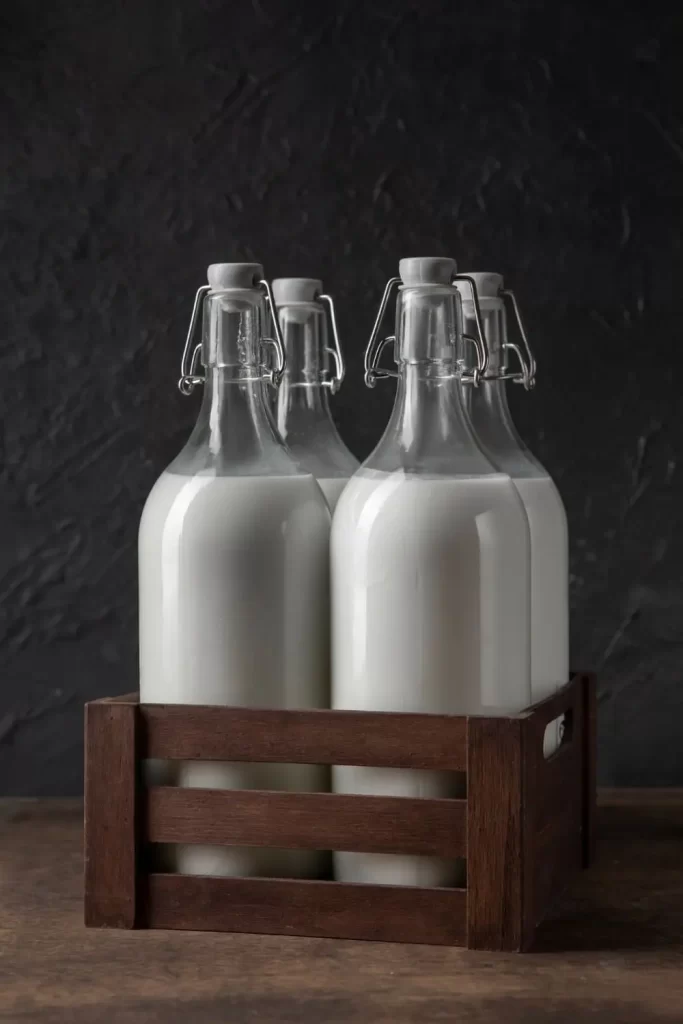Milk is an important beverage that helps meet the body’s nutritional needs. However, we often overlook that proper storage of milk also plays a critical role in maintaining its quality and benefits. As a perishable product, milk requires special care to remain safe to drink and tasty to enjoy.
This article explains why proper storage is so important, common mistakes to avoid, and how to store milk correctly.
Why Proper Milk Storage is Important?
Milk is a nutritious product with many health benefits. However, it is also perishable and susceptible to bacterial contamination if not stored properly. When milk goes bad, it can not only taste bad, but also pose health risks such as food poisoning.
Proper storage of milk helps preserve its nutrients, such as protein, calcium, and vitamins, which are vital to the body. If milk is not stored properly, its nutritional value can decrease, reducing the health benefits expected from drinking it.
Common Milk Storage Mistakes and Their Risks
Many people don’t realize that the way they store their milk can affect the quality and safety of the product. Some common mistakes include
1. Leaving Milk at Room Temperature for Too Long
Leaving milk at room temperature after opening is a common mistake. Bacteria can grow rapidly at room temperature, making the milk sour and unsafe to drink, even within a few hours.
2. Storing Milk in the Fridge Door
The refrigerator door is often used to store milk because it’s easily accessible. However, because the refrigerator door is opened and closed frequently, the temperature in this area can fluctuate. These temperature changes can cause milk to spoil faster and shorten its shelf life.
3. Bottle Not Sealed Tightly
If the bottle isn’t sealed tightly, air and contaminants from other foods in the refrigerator can get in. This can cause the milk to absorb unwanted odors and flavors and increase the risk of bacterial growth, leading to faster spoilage.
These mistakes can lead to unwanted taste changes, strange textures, and even food poisoning from uncontrolled bacterial growth.
Factors Affecting Milk Storage
Several factors affect the best way to store milk, including:
1. Type of Milk
Different types of milk require different storage methods. For example, fresh milk should always be kept in the fridge, while UHT milk can be stored at room temperature until opened.
2. Packaging
Milk packaging also affects the length and method of storage. Glass bottles generally offer better protection against light and air, which can accelerate quality deterioration.
3. Fridge Temperature
The fridge should be kept at a temperature between 33°F and 38°F (0.6°C to 3.3°C) to keep milk fresh. Higher temperatures can cause faster bacterial growth, while lower temperatures might freeze the milk and damage its texture.
4. Exposure to Light
Milk stored in transparent packaging, such as plastic bottles, is more vulnerable to light damage, especially sunlight.
Proper Storage of Arummi Cashew Milk
Arummi Cashew Milk is a delicious and healthy option for those seeking a plant-based milk alternative. To keep it fresh and nutritious, follow these storage tips:
1. Store in the Fridge at a Maximum of 7°C
After opening the package, keep the product refrigerated in the fridge at no more than 7°C. This temperature helps slow bacterial growth and keeps the product fresh.
2. Do Not Store in the Freezer
Avoid storing the product in the freezer, as freezing can damage the texture and taste.
3. Use Within 3 Days after it has been Opened
Once opened, the product is more susceptible to contamination and deterioration. It’s best to use it within 3 days to ensure it remains fresh and safe to drink. Exceeding this timeframe can increase the risk of taste and texture changes and potential health hazards.
Don’t forget, you can find fresh and high-quality Arummi Cashew Milk at your nearest supermarket!









































